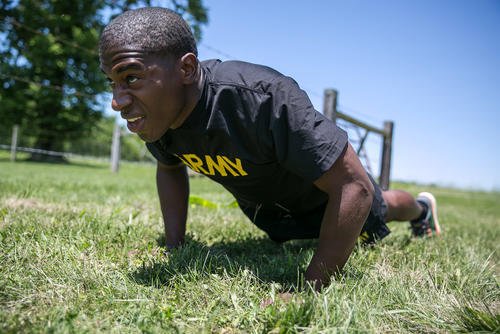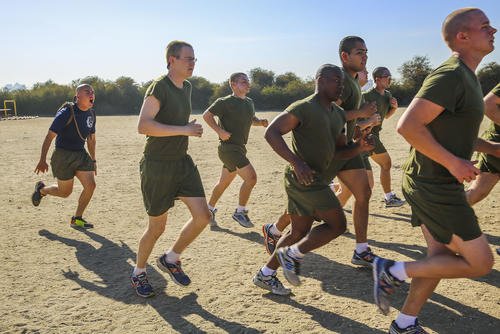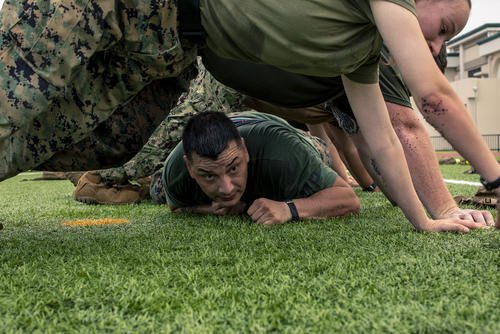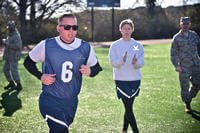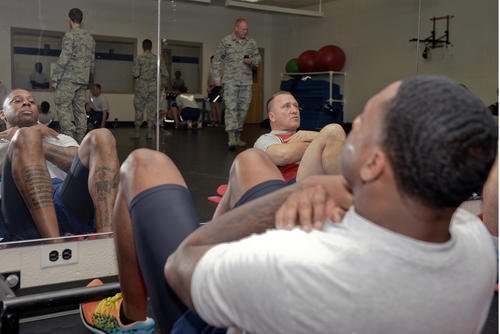Resuming running mileage after an injury and some recovery time can often create a training dilemma that could lead to reinjury if you are not careful.
Here is a question from an Army recruit increasing his running mileage to prepare for Basic Combat Training (BCT), Infantry School and Airborne/Ranger training:
Stew,
I have built up my running miles so far to 18-20 miles/week and started to feel some stress on my ankles/shins. After you take a week off (just using the bike and pool), do you pick back up at the 18-20 miles you were at or build back up to it?
Thanks,
Shane
When faced with the typical stresses of running progressions building up to 18-20 miles per week, some tactical athletes and runners resume where they left off, but most should not.
Pulling back early before it becomes an injury is smart and is different from dealing with an actual injury. Take a week and cut the miles in half by running every other day, replacing a mile of running with 10 minutes of any nonimpact cardio option on the days in between.
Read Next: How 'Hard Gainers' in the Military Can Add Weight Healthily
This logical approach represents good injury prevention and is better than ignoring the pain and pushing through it. The options are up to you. You could start back where you left off and assess each day, or run every other day for a week to see how your legs handle running again.
Listen to Your Body and Prioritize Recovery
First and foremost, injury prevention and listening to your body's signals will determine how you adapt to running again. If you had to substitute running with lower-impact activities because of stress reactions in your ankles or shins, it's a sign that your body needed a break from the repetitive impact of running.
After your first day back to training, assess yourself:
- How did it feel during the run?
- How did it feel 1-2 hours after the run?
Depending on these answers, you may want to take the next day off, but consider doing a nonimpact cardio activity, lifting or focusing more on your PT test scores. If you're feeling good, try a good warm-up the next day and let it be the determining factor of whether you run or choose a non-impact option.
I would advise against jumping right back into the full 18- to 20-mile weekly running volume immediately after a rest or cross-training week. To heal fully from an injury, you may need more than a week of not running. Even though biking and pool work maintain your aerobic conditioning, they do not replicate the specific musculoskeletal stresses of running, particularly on the lower legs, ankles, shins and knees.
Recommendation: Ramp up your running gradually, not at the previous maximum.
Example: Consider starting at 50%-60% of your former weekly mileage (e.g., 9-12 miles).
Monitor your body's response. If there's no pain or discomfort, increase your mileage by 10%-20% each week. This may take you 3-4 weeks before reaching the 18-20 miles per week volume.
I am a proponent of cross-training, especially for those recovering from minor injuries. Continue incorporating bike and pool workouts alongside your reduced running volume. This helps maintain cardiovascular fitness while reducing the impact on vulnerable joints and connective tissue.
Beyond running, emphasize mobility work, flexibility and prehab exercises (such as ankle stability drills and shin splint prevention exercises) to strengthen weak areas and create a smooth return to full running volume.
Watch for Aches and Pains
If you experience pain or discomfort in your ankles or shins during the rebuilding process, consider adding more extended recovery to your no-running weeks, continuing cross-training and possibly seeking a professional or medical evaluation. Pushing through pain often leads to longer setbacks.
A tactical fitness training philosophy is about building a strong, resilient body that can meet the demands of real-world challenges. Returning wisely after a break increases the likelihood that you will keep moving forward without getting sidelined by preventable injuries.
See more tactical fitness articles at the Military.com Fitness Section to help with recovery protocols, training ideas and more.
Want to Learn More About Military Life?
Whether you're thinking of joining the military, looking for fitness and basic training tips, or keeping up with military life and benefits, Military.com has you covered. Subscribe to Military.com to have military news, updates and resources delivered directly to your inbox.







